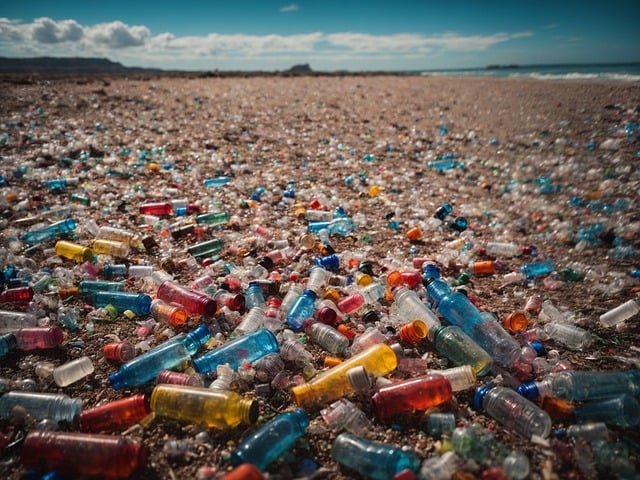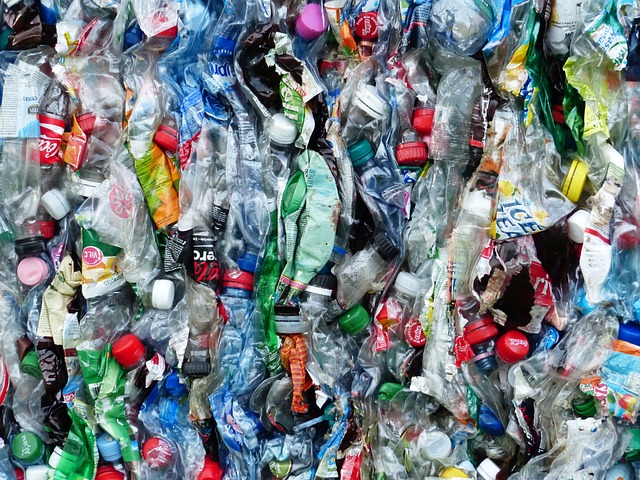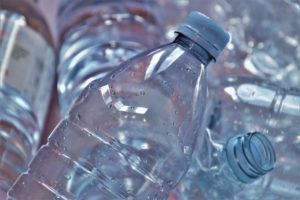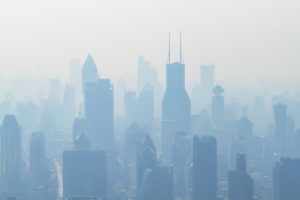Potential Treatments for Micro and Nanoplastic Exposure

Concerns continue to grow for the amount of plastic pollution in the environment and the direct effects on human health. Plastic waste in the environment slowly breaks down into smaller and smaller pieces that enter the food chain or can be inhaled. These micro and nanoplastics appear to have toxic potential and may build up in the human body. Plastic particles can cause inflammation, disrupt the gastrointestinal microbiome and induce reproductive harm, among other toxic effects (Yong 2020). For reference, nanoplastics are smaller plastic particles than microplastics.
Micro and Nanoplastics in the Body
When ingested or inhaled, microplastics do not break down chemically like other potential toxicants, making them harder for the body to process and remove. In the gastrointestinal tract, microplastics can disrupt the gut barrier through inflammatory and free radical effects and by disrupting the production of mucus (Huang 2021). Healthy gastrointestinal bacterial populations can also be disrupted.
Depending on the size and type of microplastic particle, they can be absorbed into cells (Stock 2021). This allows for gastrointestinal absorption and distribution around the body. Initial research on the excretion of micro and nanoplastics suggests that smaller particles are more readily excreted in the urine as compared to larger microplastics that are released from the body at a much slower rate (Sun 2022).
Once plastics enter into a cell they often wind up inside the cell’s lysosomes, a type of cellular garbage dump (Liu 2021). Typically, lysosomes break down waste products inside the cell. While plastic particles can wind up inside lysosomes, these cellular organelles do not have the capacity to break them down. Cells can release the particles passively or through an expulsion process facilitated by lysosomes, a process which requires cellular energy. Larger particles are harder for cells to remove once absorbed.
While research into the treatment and removal of plastic particles from the human body is in its infancy, there are potential threads suggesting avenues that may yield results. Bear in mind that some of the potential treatments outlined below are still somewhat speculative as we wait for more definitive research findings.
Potential Treatments: Gastrointestinal Considerations
Decreasing absorption of plastic particles is a simple strategy to decrease exposure of the body to these compounds. Initial research suggests that two main gastrointestinal strategies can help to protect the body from microplastics: probiotics and fiber.
Probiotics
Early animal studies have found that probiotics appear to have a protective effect against ingested plastic particles. In mice, plastic particles have been shown to disrupt reproductive function. The particles induce changes in bacteria throughout the digestive tract and lead to inflammation that affects the testes and sperm quality. Yet when mice exposed to plastic particles are given probiotics at the same time, the anti-inflammatory effects of the probiotics help to mitigate the damage caused by the particles (Zhang 2023).
In fish, micro and nanoplastics can cause liver inflammation and injury. The process appears to be caused by free radicals produced by the plastic particles. By giving the fish probiotics, the free radical process was blocked and liver function was protected (Dong 2022).
While not proven, the research suggests that probiotics will likely yield similar protective effects in humans (Bazeli 2023).
Fiber
Probably not too surprising is the fact that certain fibers may help to bind up microplastics and decrease their absorption. While chitosan is sold as a dietary supplement for weight loss, it’s been studied for the environmental cleanup of microplastics (Picos-Corrales 2023). Chitosan is a fiber-like molecule that comes from the shells of shrimp, crab, lobster and other shellfish. When added to contaminated water, chitosan causes the microplastics to bind together for easy removal. While somewhat speculative, chitosan may act to bind up microplastics in the digestive tract, facilitating their elimination.
Other fibers likely have beneficial effects for helping to clear microplastics from the digestive system, although direct human and animal studies are lacking. However, one study found that okra, taro and aloe vera fiber all had potential for helping to remove microplastics from contaminated water samples (Rajita 2020). Other common fibers, like psyllium, may also have utility.
Potential Treatments: Systemic Considerations
Antioxidants
Micro and nanoplastics are known to cause free radical damage throughout the body. It’s logical to assume that antioxidants may help to mitigate at least part of this damage. Animals exposed to microplastics have been shown to upregulate antioxidant defenses (Trestrail 2020).
Lycopene and chlorella are two examples of natural compounds that display antioxidant activities. A study in African catfish found that lycopene, the red coloring in watermelon and tomatoes, and chlorella, the green pigment in plants, were both effective at mitigating damage from microplastics (Sayed 2022).
In a trial comparing probiotics and vitamin C for protection from microplastic exposure in fish, vitamin C was found to be more effective at decreasing inflammation and swelling (Hayati 2023).
Inhaled microplastics have been shown to display lung-toxic effects, mostly through inflammatory and free radical processes. In mice given N-acetylcysteine (NAC), the precursor to the body’s antioxidant glutathione, lung toxicity from microplastic inhalation was prevented (Wu 2023).
Vitamin D
A study also found that vitamin D can help with some of the damage caused by microplastics. Certain microplastics are known to disrupt and elevate cholesterol and triglyceride levels, risk factors for heart disease. In zebrafish fed either a low or high vitamin D diet, the lipid disruptions were partially mitigated by vitamin D (Li 2023).
Mitochondrial and Energy Production Support

Depending on the location, energy may be needed for the body to release microplastic particles that have become trapped inside cells. Upregulating or supporting the body’s energy production may help to clear micro and nanoplastics from the body.
While studies were somewhat mixed, some initial data suggests that citric acid, a compound that can increase energy production, appears to help with protecting fish from damage due to microplastic exposure (Sayed 2021, Hamed 2022).
Conclusion
Plastic pollution is increasing and contributes to both ingestion and inhalation of micro and nanoplastics that can have toxic effects on the human body. While the research is still in its infancy, a number of approaches may help to decrease the toxic effects from plastic particles. Probiotics, fiber, antioxidants, vitamin D and appropriate energy support may all help to reduce the inflammatory and free radical damage induced from microplastic-particle exposure.



